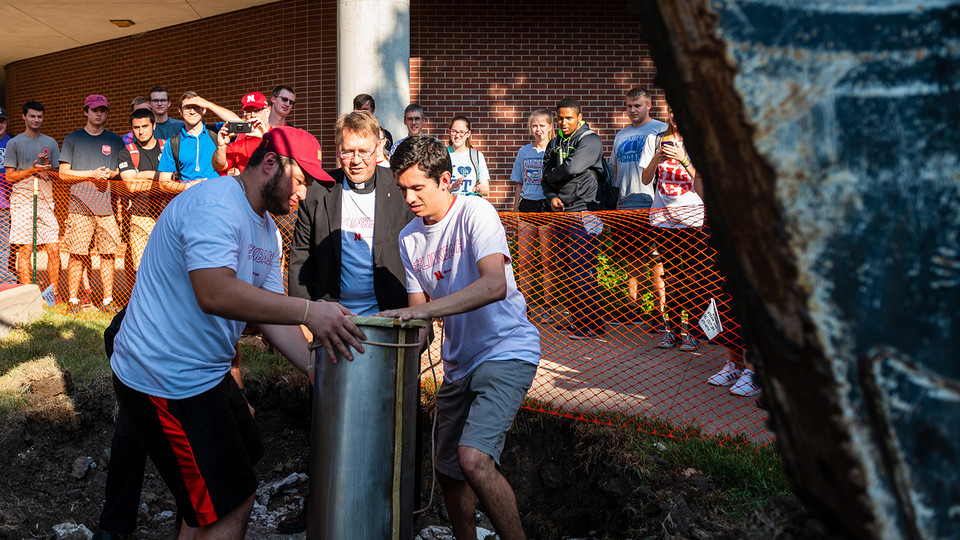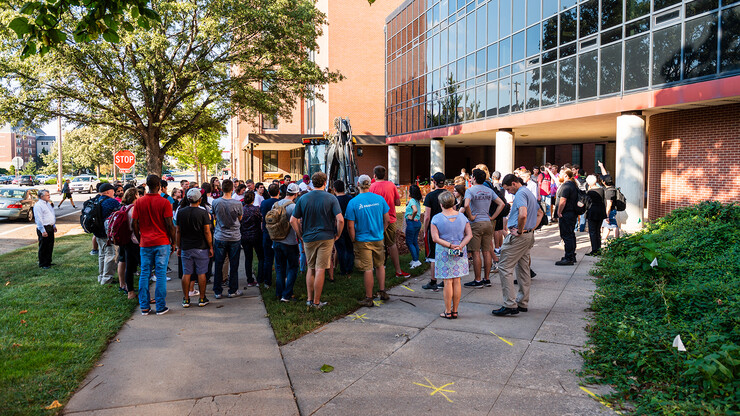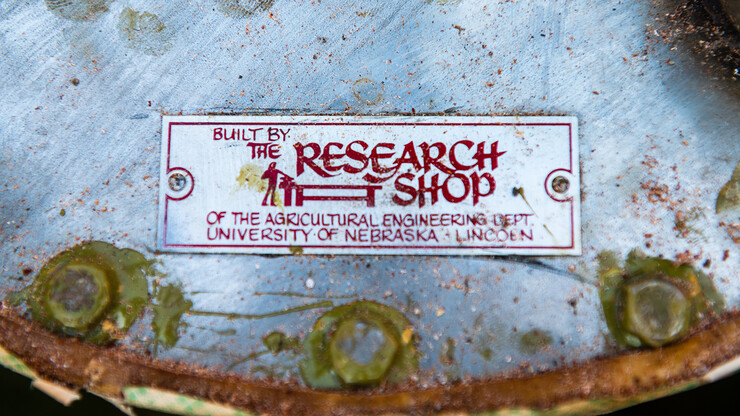· 2 min read
Engineering expansion temporarily unearths time capsule

College of Engineering expansion projects at the University of Nebraska–Lincoln have temporarily unearthed a time capsule buried 32 years ago.
Removed Sept. 19, the capsule was buried 32 years ago near the entrance to the Scott Engineering Center. To ease extraction, Hausmann Construction removed the concrete slab that protected the capsule.
The capsule, which was created in 1987 to commemorate the 75th anniversary of Engineering Week, was buried on the west side of the Link, near 16th and X streets, and was scheduled to be opened in 2037 on the 125th anniversary. It will be moved to a temporary location in the college, where it will be displayed until it can be reburied.
The Link, which housed offices and classrooms in a space between Nebraska Hall and Scott Engineering Center, will be demolished this fall as part of the construction project and a new and larger building constructed in its place. The project completion date is estimated for fall 2021.
More than three decades ago, Nebraska engineering students worked with local companies to design and build the capsule.
Bill Holoubek, a 1987 agricultural engineering graduate and now a Catholic priest, oversaw the project. The capsule concept was conceived by David Jensen, a 1986 mechanical engineering graduate. Blueprints were created by John Lewandowski, a 1985 construction management graduate.
Artifacts from engineering student groups were placed inside the capsule. The contents include papers, photos, a floppy diskette, a voltage regulator, silicon diodes, integrated circuit chips, castings, slide film and videocassette tapes. Nebraska Engineering students Lynette Fix and Deb Keil collected and prepared the artifacts.
Argon gas was then pumped into the capsule to displace the air and the exterior was heated with a torch to drive off moisture. The capsule was buried inside a 15-inch plastic cylinder that contains styrene bead board and fiberglass insulation as protection.
Details about the capsule’s return to a burial site will be announced.









